Do you ever wonder what it’s like to be a modern Montana buffalo hunter? Today, the thrill and tradition of hunting these majestic creatures in the vast landscapes of southwest Montana are activities still cherished by both tribal and state hunters.
For all the outdoor enthusiasts and wildlife aficionados, the exhilaration of a successful buffalo hunt is an experience unlike any other. And it’s not just a sport; for many, it’s about heritage, culture, and engaging with nature in its raw form.
This article will serve as your ultimate guide to mastering the hunt, narrating the experiences, and providing first-hand advice to Montana hunters, all the while ensuring you’re knowledgeable and prepared for your venture.
As we journey through the rugged terrains of Montana, we’ll explore the essential facets of bison hunting from understanding the behavior and biology of bison to critical tips for a successful and safe hunt. Let’s discover how you, too, can master the wilderness in Montana on a buffalo hunt.
- Related article: Montana Hunting Tips for Beginners
Whether you’ve just sketched hunting plans on the horizon or are a seasoned outdoorsman, these essentials are a must-read. So saddle up and journey with us as we explore Montana’s great wilderness and broaden your insight into the masterful art of buffalo hunting.
7 Key Takeaways on Montana Buffalo Hunt
- Bison hunting in Montana is more than a mere hunt; it’s a cultural and historical experience requiring respect for heritage and tradition.
- Understanding Montana’s hunting regulations is vital to ensure a legal and safe hunt that honors the state’s wildlife conservation efforts.
- Respecting the natural behavior of bison, including their size, habits, and trackability, is crucial for a successful and ethical hunt.
- Obtaining the right licenses and understanding the application process, including deadlines, fees, and hunting districts, are essential steps in preparing a hunt for bison.
- Exploring lottery opportunities, particularly the guided trophy hunt and SuperTag, can be a unique and exciting pathway to secure a bison hunt.
- Knowing and respecting hunting regulations, from designated hunting zones to field dressing practices, ensures safe and environmentally friendly hunting.
- Selecting a reputable hunting outfitter can greatly influence your hunting experience based on location, level of guidance, and hunting style.
How to Hunt Buffalo in Montana
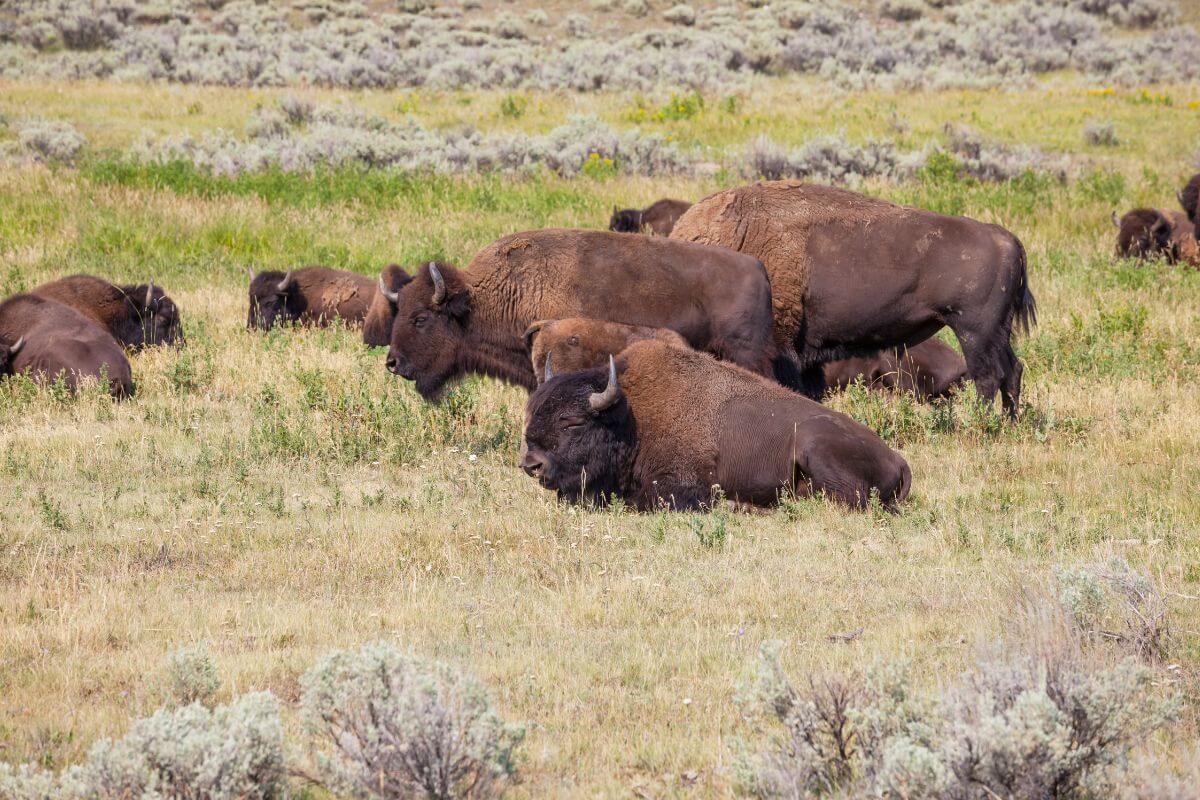
When bison hunting in Montana, you’re not just hunting, you’re stepping into a rich historical tapestry of American cultural heritage. This isn’t just about tracking and taking down a buffalo; it’s about honoring the traditions and respect that have surrounded buffalo hunting for centuries.
As you prepare for your Montana Buffalo hunt, let these key tips guide you. In doing so, you’re not only ensuring your safety but you’re also respecting the buffalo you’re pursuing and the beautiful wilderness in which they roam.
1. Montana Bison
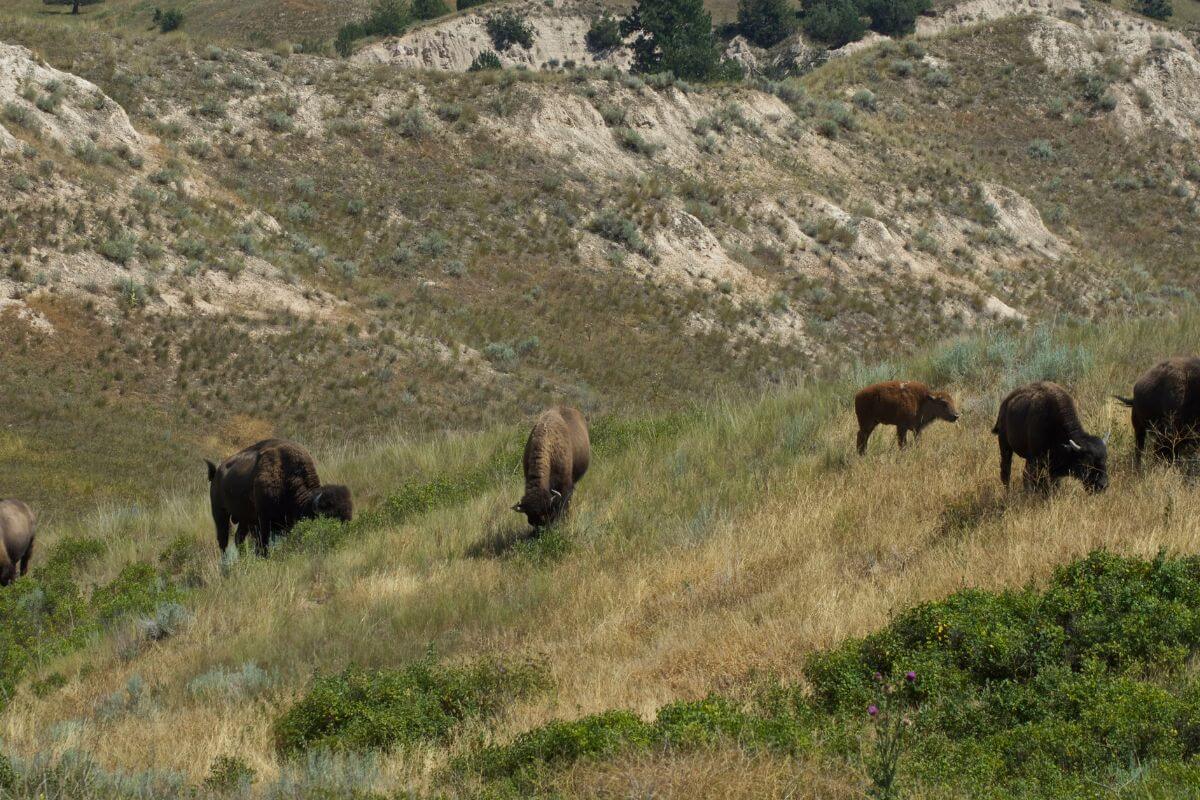
If there’s one thing you’re bound to come across in the wilderness of Montana, it’s the mighty bison. These guys are no small fish in the big pond, the bison or American buffalo is the largest terrestrial mammal in North America.
In prehistoric times, millions of bison roamed North America, and their history has been closely intertwined with many Indigenous communities. Some Native American tribes have aboriginal hunting rights to bison in Montana under treaties with the U.S. Government.
It’s not just Native American tribes that have a special relationship with these animals. Bison are also the national mammals of the United States — the boldface of American wilderness.
Bison have unique physical characteristics that have contributed to their historical success, including:
- Large, low-hanging heads for gathering vegetation, and sharp horns for self-defense.
- They have the thickest winter hair out there, which makes them ready for both the snowiest winters and the hottest summers.
- Despite their size, bison are fast, agile, and strong swimmers.
- Bison primarily eat grasses, weeds, and leafy plants.
- Bulls, the male bison, can weigh up to 2,000 pounds and stand 6 feet tall, while cows, the female bison, weigh up to 1,000 pounds and reach a height of 4-5 feet.
- Baby bison, or “red dogs,” are identifiable by their orange-red coloring.
And here’s an impressive tidbit for you: Yellowstone National Park is the only locale in the U.S. where bison have roamed continuously since the days of cavemen adorned in cozy hide. So when you’re out and about in Montana, cast your eyes upon the mighty bison, a true symbol of American wildlife.
2. Montana Bison Hunting Application
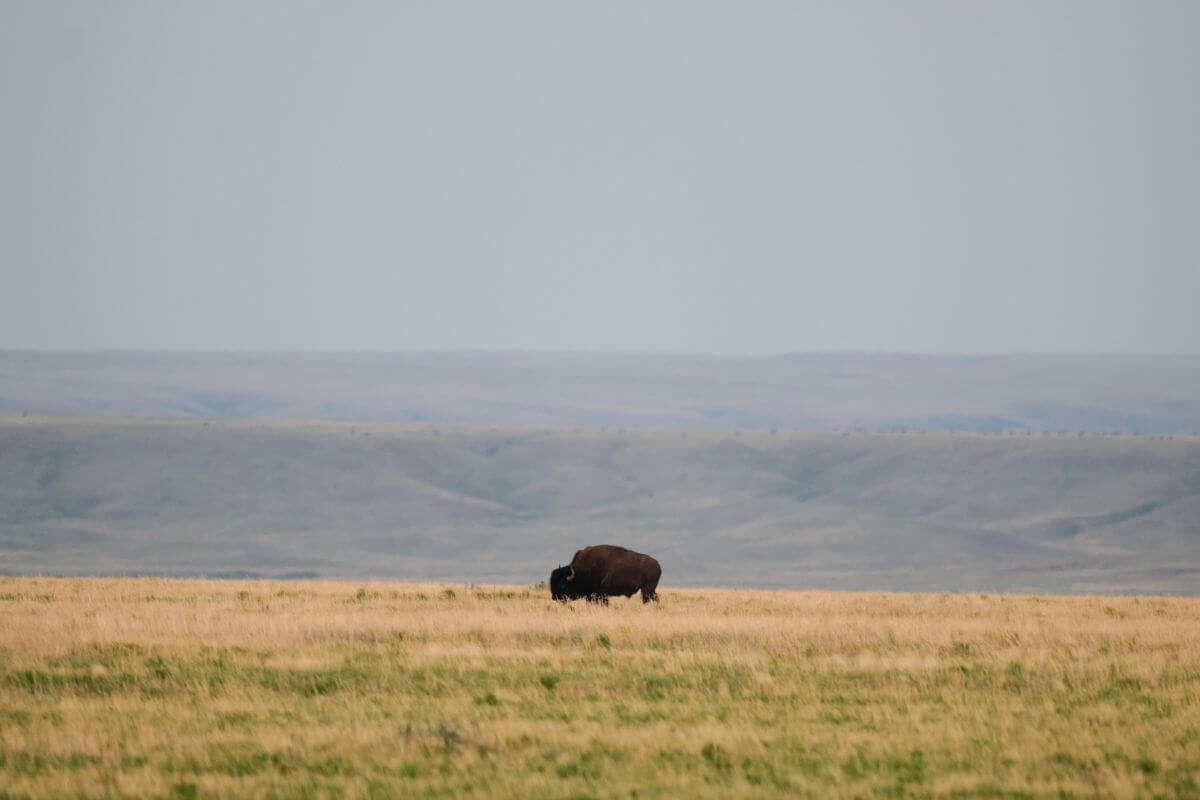
Once you’ve managed to overcome the tough hurdles (let’s face it, the wait list can be tough), and secured yourself a spot among the envied bison applicants, here’s what you need to know next:
- Email Induction – If you’re one of the lucky ones to bag an either-sex bison license, congratulations are in order! The email that’ll ping its way into your inbox comes jam-packed with essential tidbits, including details for your online bison hunter orientation.
- Archery Add-On – For hunters wishing to use archery equipment, make sure to follow through on the instructions from your successful either-sex application email. You’ll need to complete a mandatory archery orientation as well.
- Hunt Roster and Second Choices – Second-choice hunters, don’t toss your camouflage gear just yet. If the hunt roster comes into play, up to 200 second-choice state-issued licenses might be incrementally awarded. This roster isn’t just for show; it’s a strategic tool designed to cater to the bison migration across different hunting districts.
- Bison Damage Control – The hunt roster isn’t just about spreading the joy; it also comes into play for more serious matters like bison damage or management hunts. Depending on the need, the roster can issue licenses for bulls, cows, or calves at any time.
If you are planning to hunt bison in Montana, it is important to understand the details of the hunting application process. Make sure that you have all the necessary information before proceeding.
It’s not just about getting the license; it’s about knowing the next steps and being prepared for what the hunt may bring your way – be it an exhilarating chase or an enchanting encounter with nature.
3. Montana Bison Hunting Licenses and Fees
In Montana, hunters are required to obtain a bison license to hunt these majestic animals. The state has specific regulations in place for bison hunting, including the requirement that hunters may only hold one bison license.
To apply for a bison license, hunters must also have the prerequisite Conservation and Base Hunting licenses. In addition to the necessary licenses, there is also an application fee that must be paid when applying for a bison license.
For residents, the nonrefundable application fee is $10, while nonresidents must pay a fee of $50. It’s important to note that this application fee is required for each license or permit that a hunter applies for.
For the complete breakdown of fees for both residents and non-residents, the following chart outlines the costs associated with obtaining a bison hunting license in Montana:
| License | Resident Fee | Nonresident Fee | Deadline | Availability |
| Bison License | $125 | $1,250 | May 1 | Special Drawing |
These fees and requirements are in place to ensure that bison hunting in Montana is regulated and sustainable, allowing for the continued enjoyment of this unique hunting opportunity.
4. Montana Bison Hunting Season Dates
General season dates for bison hunting in Montana are from Nov. 15 to Feb. 15. For specific season dates for each hunting district, refer to the chart below:
| Hunting District | License | Opportunity | Number of Licenses | Season Dates | Details |
| HD 385 | 385-20 | Either Sex | 40 | Nov 15-Feb 15 | |
| HD 385 | 385-21 | Either Sex | 5 | Sep 15-Nov 14 | A wilderness backcountry hunt. |
| HD 385 | 385-77 | Will vary | Bison Hunt Roster | Nov 15-Feb 15 | Second choice only license. |
| HD 395 | 395-20 | Either Sex | 25 | Nov 15-Feb 15 | Bison are migratory in this area. |
| HD 395 | 395-77 | Will vary | Bison Hunt Roster | Nov 15-Feb 15 | Second choice only license. |
For more information regarding the Montana Bison Hunting Districts:
- Hunting District 385 (Gardiner area) -The Gardiner Basin is where bison are commonly found, primarily within Gallatin National Forest, with minimal private lands. Low snow accumulation allows accessible foot or horseback travel throughout the season. Bison harvest is mainly driven by concerns about brucellosis transmission to cattle.
- Hunting District 395 (West Yellowstone area) – The West Yellowstone Basin is also a common area for bison. Hunters should be aware of restricted bison hunting areas in private subdivisions. Snow accumulation limits access to snowmobiles, snowshoes, or skis as the season advances.
The availability of bison in a hunting district during a hunting period will depend primarily on weather and migratory patterns. Hunters should consider bison availability when planning their hunting trips.
Understanding the specifics of the areas you’re hunting in can give you the edge when it comes to bison availability. Whether it’s on foot, horseback, or even cross-country skiing, nailing down what wildlife habitats you’ll be traversing can be the difference between an epic hunt and an underwhelming one.
5. Montana Bison Hunting Lotteries
If your wildest dreams involve staring down a bison in Montana, you’re in luck. The state offers two major bison hunting lotteries: one for a guided trophy hunt on the Blackfeet Reservation and the other, for a SuperTag opportunity that could see you effortlessly bagging a bison license.
Guided Trophy Bison Hunt on the Blackfeet Reservation details:
- Offers a guaranteed bison hunt with 5 opportunities to enter.
- Chances are $10 each, and you can buy up to 20.
- Open to everyone, from tribal members to non-resident adventurers.
- You get to keep the bison’s head, hide, and meat if you’re successful.
SuperTag Lottery for Bison details:
- Residents and nonresidents can buy unlimited $5 chances.
- A person can achieve success in obtaining one or more SuperTags annually.
- SuperTags allow hunting in any valid hunting district for that species.
- SuperTag application deadline is June 30.
Montana Bison Hunting Drawing Results:
| License | Drawing Results |
| Bison License | Mid-May |
| SuperTag Bison | Early July |
If you want to pursue a smart strategy, why not spread your chances by entering both lotteries? After all, the state motto might as well be ‘Big Skies, Big Game, Big Options.’
6. Montana Bison Hunting Regulations
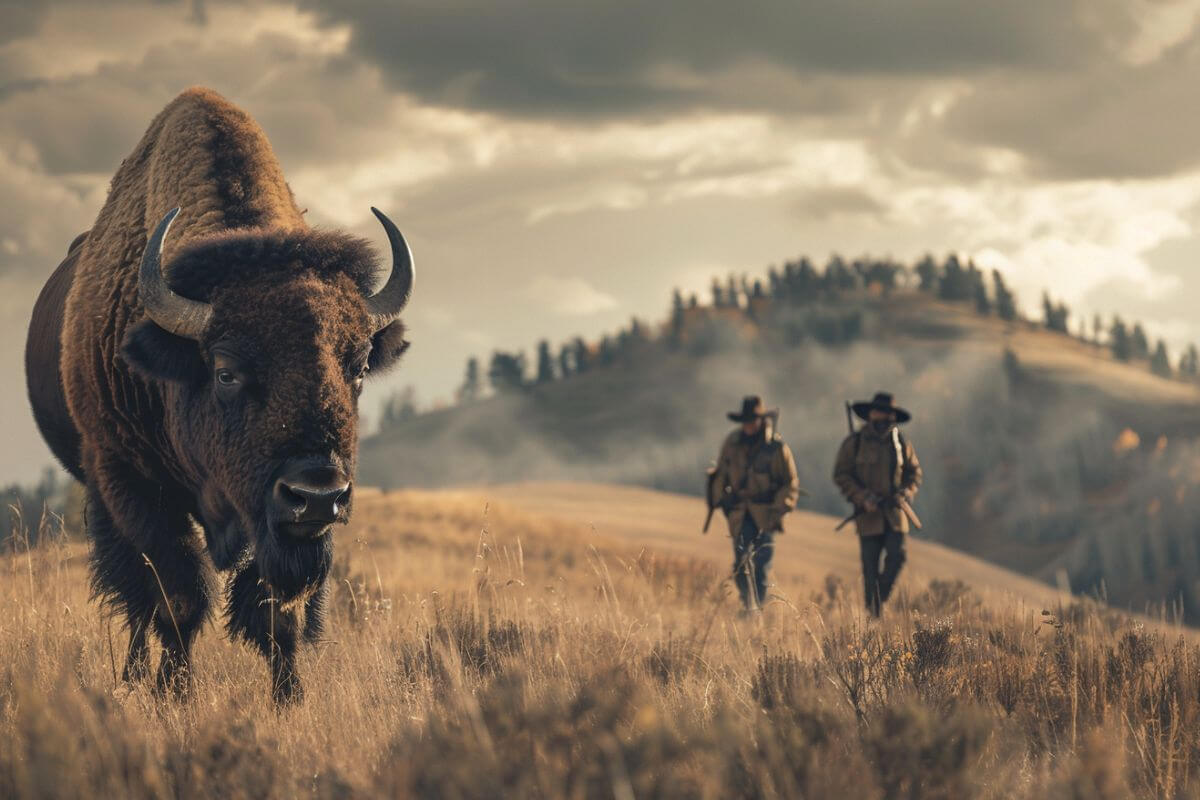
Montana, the treasure trove for bison hunting, has its fair share of regulations to ensure safety and responsible practices. Here’s what you need to know before you head out:
- No-Go Zones – Bison hunting is off-limits within 100 yards of U.S. highways 20, 89, 191, or 287, and it’s a good practice to keep your distance from all roads.
- National Forest Rules – Firearm discharges near buildings, campsites, and across forest service roads are definite no-nos. You can only hunt on foot or horseback.
- Environment-Friendly Harvest – When field dressing the carcass, you must open the rumen and spread the vegetative contents. Additionally, any unutilized parts should be removed and placed at least 200 yards from any roadway or dwelling.
- Choice of Arms – You can only use center-fire rifles or archery equipment for the hunt. Rifles are restricted to center-fire, 150-grain, or larger bullets.
- Bison Hotline – To keep yourself updated, the Montana Fish, Wildlife & Parks can be reached at 1-406-577-7889.
- Reporting Your Catch – A successful hunt means you have to report your harvested bison within 48 hours by calling 1-877-397-9453 or 406-444-0356.
Respecting these regulations not only keeps you on the right side of the law but also ensures that the wilderness and its inhabitants remain undisturbed. Happy and safe hunting!
7. Montana Outfitters for Bison Hunting

If the idea of a bison hunt in Montana is beginning to quicken your pulse, let’s talk about some of the standout companies that can help turn this dream into a reality. Your bison hunt experience will largely depend on the outfitter you choose, so let’s take a look at the big names in this field:
- Big Sky Bison – This is a go-to option for one-day bison hunt and harvest experiences. The Rockin 4B Ranch is their playground, offering a 100% opportunity to see and, typically, a 100% success rate. Easy vehicle access gets you within 75-150 yards of the herd.
- Elk River Outfitters – Offering a taste of history, Elk River’s hunts take place in eastern Montana, right in the heart of traditional buffalo hunting grounds. With over 1,800 free-roaming buffalo to track, this is a real “spot and stalk” adventure, echoing the hunting methods of centuries past.
- Bearpaw Outfitters – If you’re based in or near Missoula, Bearpaw is a convenient choice as it operates on private ranches less than an hour away. They offer guided hunts exclusively due to the inherent danger of hunting bison, ensuring a professionally managed, yet still adrenaline-pumping experience.
Remember, each of these outfitters exists within its sphere, allowing for widely different hunting experiences, both in terms of location and hunting style. So, whether you’re a seasoned hunter or you’ve never held a rifle before, there’s an outfitter out there perfectly tailored to your needs.
8. Montana Bison Hunting Tips
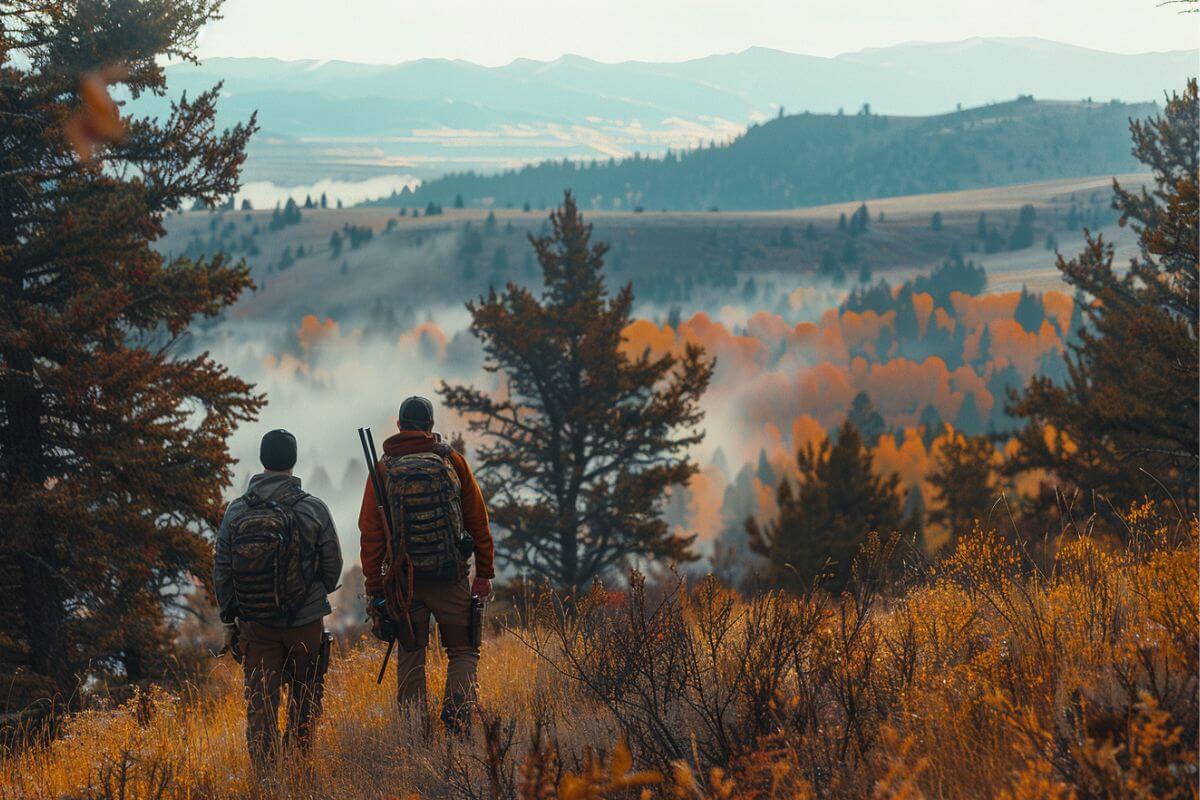
Hunting a bison in Montana can be both thrilling and challenging, so understanding bison behavior and having the right equipment is key.
Here are some tips to help you on your Montana buffalo hunt:
- Read Their Tails – A bison’s tail is the key to understanding its mood. When it hangs down and switches naturally, it usually signals calmness, while a tail standing straight up might mean you’re in for a charge.
- Adapt to Their Senses – Bison are nearsighted but have sharp senses of smell and hearing. So, move quietly and use the wind to your advantage.
- Don’t Go Solo – Bison are massive, often topping 2,000 pounds. While they may look solitary, it’s best to bring extra hands or even hire an outfitter to help with field dressing and handling.
- Tools of the Trade – If you decide to field dress your bison, bring an assortment of tools like axes, knives, saws, and block and tackle. It’s not a job for the ill-equipped.
- Meat Processing Is Priority – The thick hide and size of the bison mean its meat can spoil quickly. The experts recommend skinning and quartering the bison within 5 hours of the kill. It is not recommended to leave the bison hide hanging overnight.
By following these tips, hunters can increase their chances of a successful and safe bison hunt in Montana.
9. Brucellosis in Montana Bison

Brucellosis is a disease caused by bacteria found in bison living in Yellowstone National Park. The primary reason for bison control in Montana is to minimize the spread of this disease.
The bacterium that causes brucellosis can also infect humans, leading to a condition known as undulant fever. If treated early, undulant fever is fairly easy to cure, but it becomes difficult to treat if it reaches a chronic stage.
In bison, the bacteria is concentrated in the lymph nodes, reproductive organs, and the udder. However, cooking thoroughly destroys any bacteria present in the meat, making it safe to eat.
Bison Meat Handling Tips to Minimize Risks of Disease:
- Stay Informed – Always consider every bison potentially infected as about 50% of tested bison have shown exposure to brucellosis.
- Safety First – When dressing carcasses or handling viscera, wear protective gloves.
- Handle With Care – Minimize contact with fluids, brain, spinal tissues, milk, or reproductive tracts.
- Healthy Habits – Avoid touching your face until you’ve properly scrubbed your hands.
- Caution Advised – Be extra cautious if you have sores or cuts on your hands.
- Safe Choices – It’s best to discard organ meats to be on the safe side.
- Clean Practices – And, as always, thoroughly wash your hands and instruments after field dressing or processing.
So, while enjoying the thrill of a Montana bison hunt and savoring its meat is exciting, ensuring your safety by adopting these handling practices is vital.
Montana Buffalo Hunts Final Thoughts
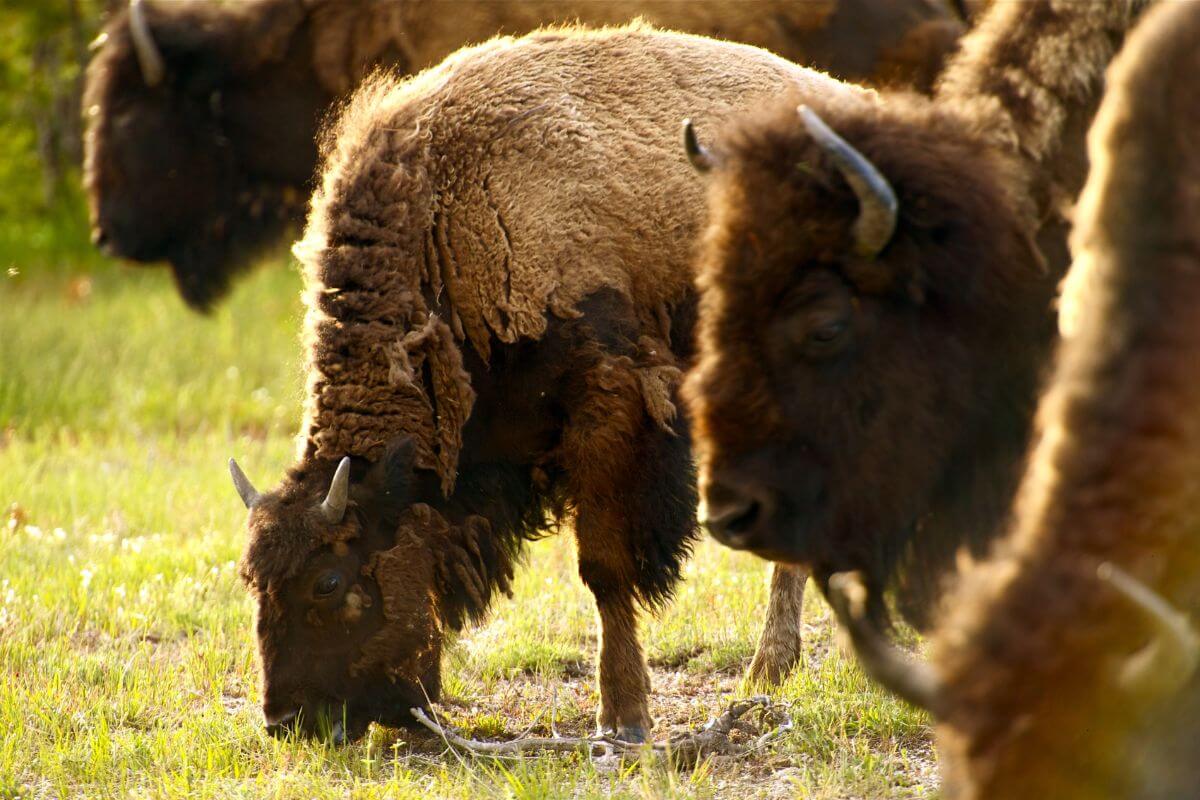
In mastering the wilderness of Montana through a bison hunt, remember that it’s not just about bagging a trophy. This uniquely American adventure is steeped in culture and history, demanding your respect for both nature and the deep-rooted traditions that underpin the hunt.
Understanding bison behavior and adhering to Montana’s regulations — from hunting districts to field dressing practices – ensures a legal and sustainable experience. Plus, recognizing the diversity of hunting experiences, whether with expert outfitters or through lottery opportunities, adds a layer of excitement to your journey.
As you pore over maps and plot your hunting strategy, let the spirit of adventure guide you. There’s a rich legacy awaiting you in Montana’s wilderness, where every bison you encounter is more than just a target — it’s a symbol of the American frontier.
So brush up on those bison facts, secure your permits, respect the law of the land, and, most importantly, let your Montana bison hunt be a story of honor and appreciation as you step into the wild heart of a storied wilderness.
Montana Buffalo Hunts FAQs
1. Can You Hunt Buffalo in Montana?
Buffalo hunting is legal in Montana, but it is highly regulated and requires a license. Hunters must adhere to specific seasons and guidelines set by the Montana Fish, Wildlife & Parks Department.
2. How Much Does It Cost to Hunt Bison in Montana?
In Montana, the cost to hunt bison is $125 for residents and $1,250 for nonresidents.
3. Are There Free-range Bison in Montana?
There are free-range bison in Montana. Areas like Yellowstone National Park and the National Bison Range host herds of free-ranging bison where they roam across large expanses of land.
4. Do Buffalos Roam Wild in Montana?
Wild bison, often referred to as buffalo, roam in certain parts of Montana, where about 300 to 500 shaggy buffalo roam almost 19,000 acres of grasslands and timber in the western part.
5. Can You Eat Bison Meat?
Yes, bison meat is commonly consumed and is considered a lean and nutritious alternative to traditional meats like beef. Many ranches and specialty meat suppliers in Montana offer bison meat, allowing consumers to enjoy the unique taste and nutritional benefits of this lean and flavorful meat.
Uncover new ideas about Montana through the articles below:
- Montana Bear Hunting Guide
- Antelope Hunts in Montana
- Hunt Deer in Montana
- Montana Duck Season
- Hunt Elk in Montana
- https://www.doi.gov/blog/15-facts-about-our-national-mammal-american-bison
- https://fwp.mt.gov/conservation/wildlife-management/bison
- https://fieldguide.mt.gov/speciesDetail.aspx?elcode=AMALE01010
- https://fwp.mt.gov/hunt/regulations/bison
- https://fwp.mt.gov/binaries/content/assets/fwp/hunt/regulations/2024/2024-msgb-final-for-web.pdf

